How To Stay Safe At The Beach: Top Beach Safety Tips
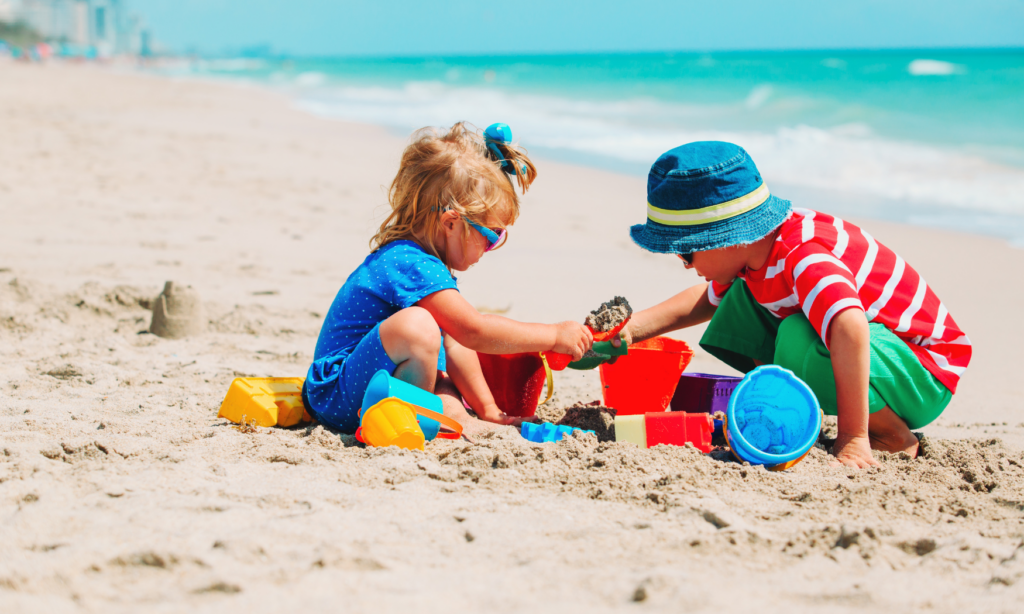
SEARCH BLOG POSTS
SEARCH BY CATEGORIES
SEARCH BY MONTH
As the sun shines down here in Cornwall, you might be heading out to the coast to enjoy the sand and sea. To make sure you and your loved ones stay safe, check out our guide on how to stay safe at the beach.
At Cornwall Air Ambulance, we work closely alongside the RNLI and attend many beach emergency call outs each year. Did you know that the RNLI’s lifeboats were launched over 9100 times last year? Often, we are called out to support those in critical conditions.
You can support us in preventing the rise of beach emergencies while keeping everyone safe by reading and educating yourself with this simple beach safety checklist.
7 Tips For Staying Safe At The Beach:
1. Choose a Beach with Lifeguards
Whether you plan to simply dip your toes in for a paddle, swim, bodyboard, or surf, choose a lifeguarded beach. Whilst the water may be beautiful, it is also powerful and even shallow water can pose risks, especially for young children. You can use this Lifeguard Service List to locate your favourite lifeguarded beaches in Cornwall.
2. Know Your Flags
There are three main types of flags that you should know about. These are set out by the lifeguards and moved around on the beach depending on the conditions each day.
Red and Yellow Flags
Red and yellow flags show you where you can swim. If you want to head into the water for a paddle or swim, make sure you swim between the red and yellow flags. You can also take bodyboards in this area. Here lifeguards will be actively watching and patrolling this area, keeping you safe if you get into trouble in the water. Lifeguards may move these flags throughout the day as conditions, such as the tide, currents and weather change. Keep an eye out for these changes and stay between these flags when swimming in the ocean so that you can keep everyone safe.
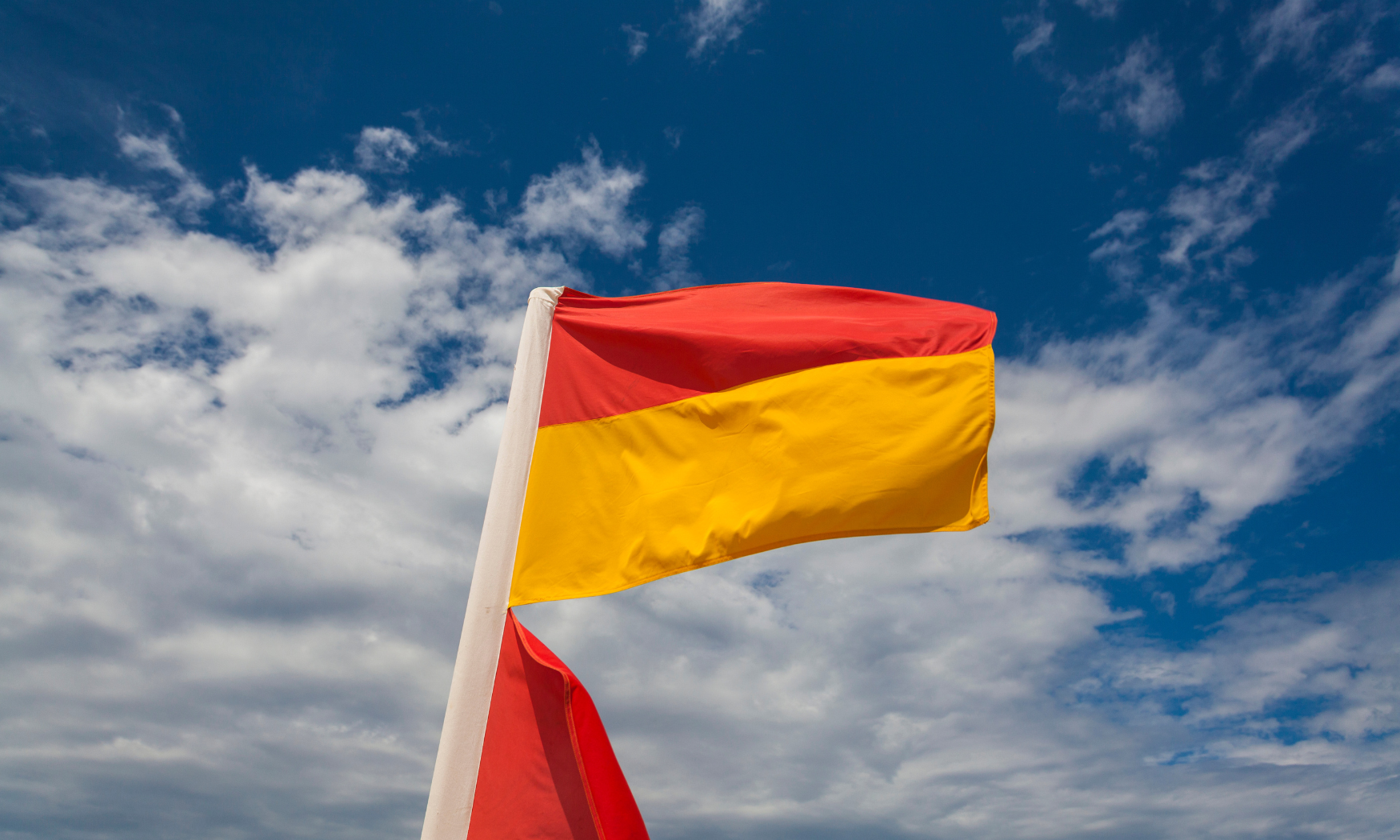
Black and White Flags
Black and white chequered flags show you where you can use surfboards and non-powered equipment such as stand-up paddleboards and kayaks. It is also where kitesurfers and windsurfers can launch. You must not swim or bodyboard in this area as there is a high risk of not being seen or being hit by hard boards and other equipment.
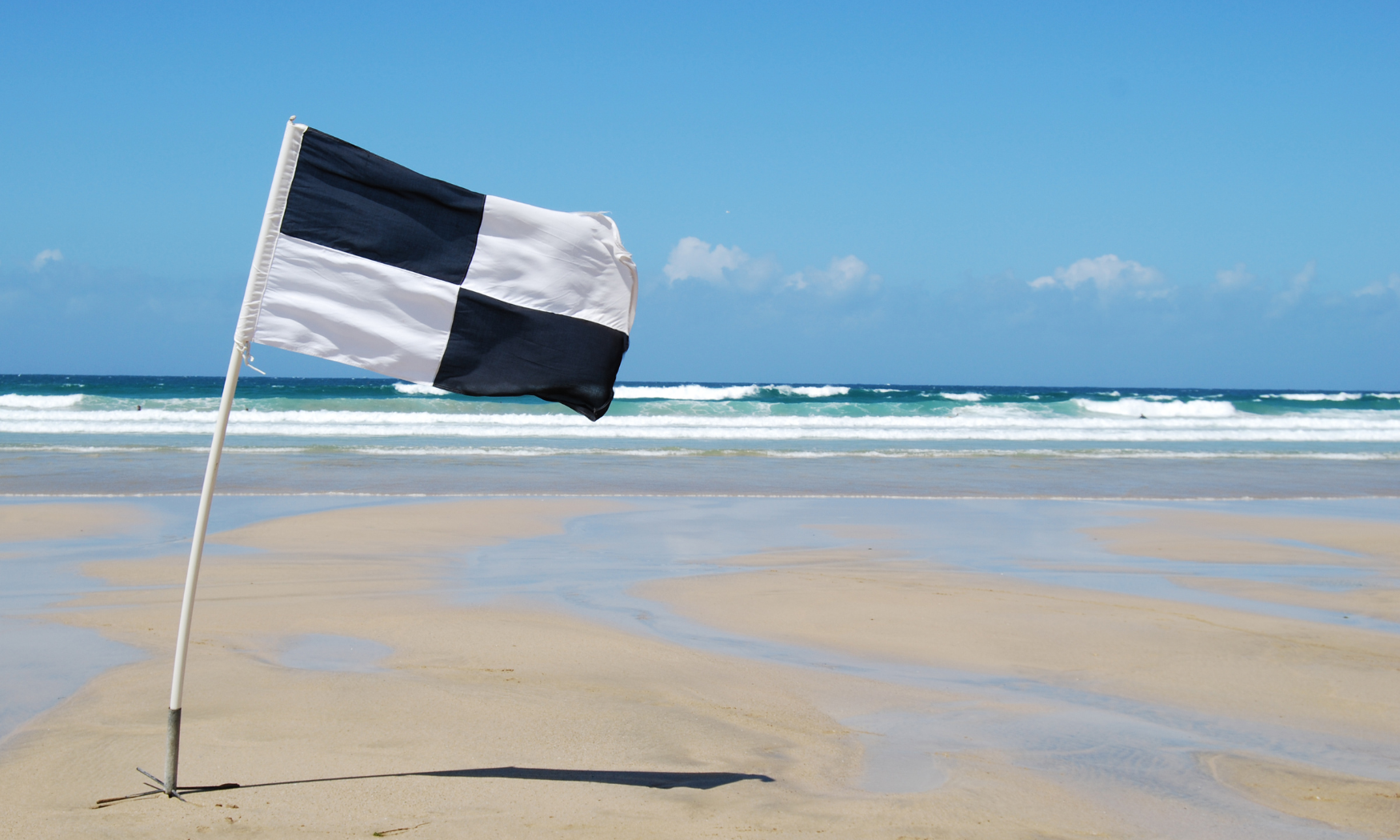
Red Flags
Red flags mean ‘do not enter the water.’ These flags show that conditions are dangerous and that the water is unsafe for all activities, including paddling, swimming, bodyboarding, surfing and kayaking. If you see red flags, do not enter the water and keep yourself safe.
3. Do Not Use Inflatables in the Sea
Whilst inflatables can bring fun for the whole family, they also pose risks. In fact, they are one of the most common reasons that lifeguards get called to action. The HM Coastguard and RNLI advise not to use inflatables in the sea. Even when the sea looks calm, offshore winds and rip currents beneath the surface can quickly and unknowingly drag you out to sea. Leave your inflatables at home and enjoy them in a pool setting instead.
Orange Windsock
It is important to note that an orange windsock indicates that there are strong or offshore winds. Never use inflatables in these conditions, and be aware of other activities such as paddleboarding, which may pose risks in offshore winds or winds over 10mph. If you are unsure what you should or shouldn’t do, ask the lifeguards on patrol. You may also notice additional safety signs, such as blackboards with beach conditions and specific information that can help you stay safe.
4. Watch Out for the Tide
Depending on the location, the tide and size of a beach can drastically change in a short period of time. Check the tide times before you head out so that you know whether the tide is coming in or out. Whilst you are at the beach, be aware of the tide so that you do not get cut off or stranded. This is especially important if you are rock pooling or have walked around the corner to another cove, as the tide can easily block your path on your way back. You can check tide times on a variety of websites and apps, including MetOffice.

5. Be Aware of Rip Currents
Rip currents are powerful forces which can quickly drag you and others out to sea. They can be difficult to spot, but those who understand the ocean, including lifeguards, can usually identify them by looking at darker, narrow gaps of water that are between breaking waves. Usually, lifeguards will place the red and yellow flags away from rip currents to keep you safe however, even strong swimmers and surfers can be caught out. You may want to ask the lifeguards on beach patrol if there are any rip currents that you should be aware of that day.
If you do find yourself caught in a rip, stay calm and don’t try to swim against it. If you can stand, wade out of the water rather than swim. If you are out of your depth, look for the nearest breaking waves (these indicate the edge of the rip current) and swim parallel to the shore until you are free of the current. You can then head to shore. However, if you are struggling, raise your hand and shout for help and then use the RNLI’s float-to-live technique to save energy while waiting for help to arrive.
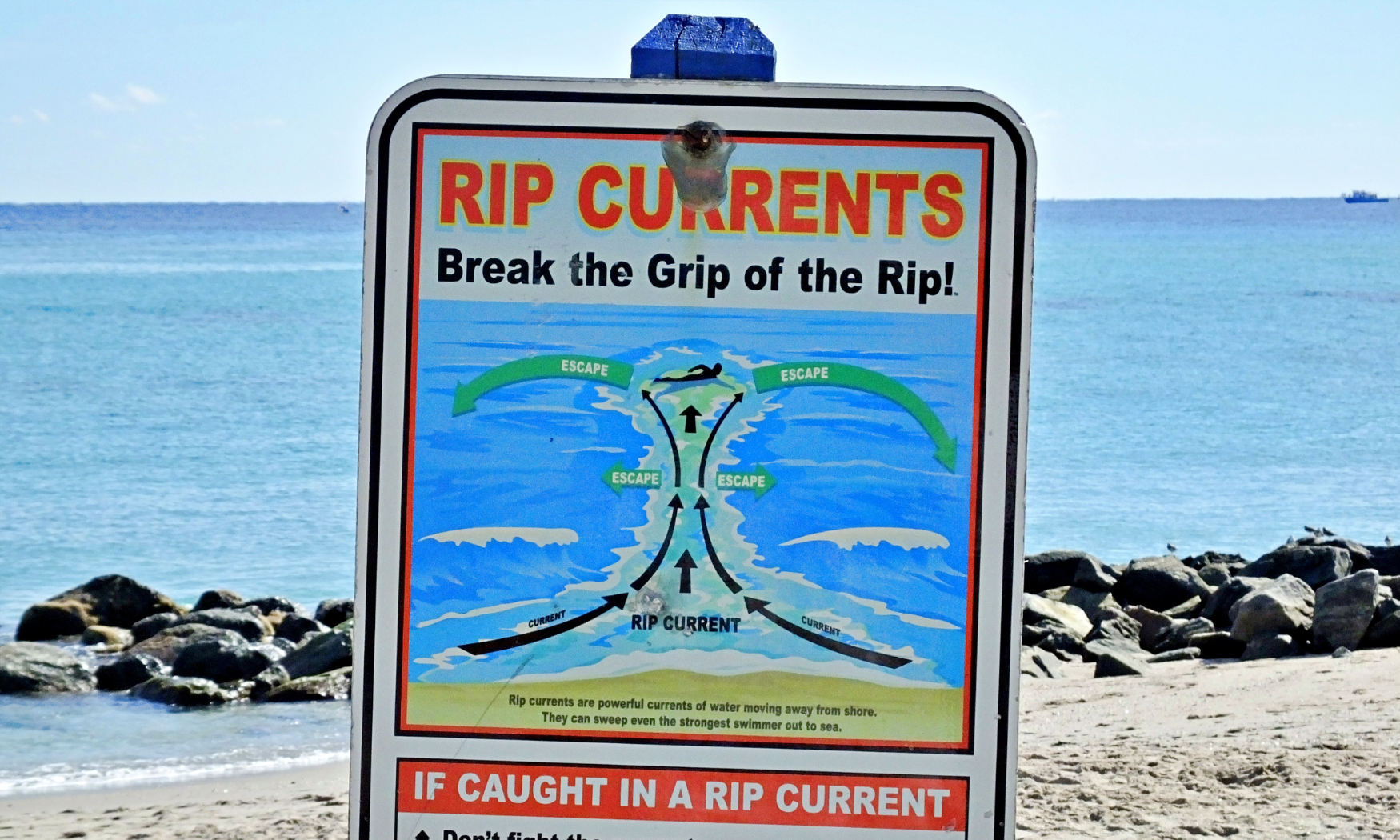
6. Stay Safe Under the Sun
Simply lying on the sand also poses its own risks. Last year, the NHS found that there were 109,096 visits to their advice page on heat stroke and exhaustion in one week in June. Heat exhaustion can lead to symptoms such as tiredness, dizziness, headaches, feeling sick, excessive sweating, heat rashes, cramps, fast breathing, raised heart rate, high temperature and weakness. If these signs are ignored, it can turn into heatstroke which can then become a medical emergency. To avoid heat exhaustion, make sure you stay hydrated, avoid drinking lots of alcohol, stay out of the sun between 11 am-3 pm and avoid extreme exercise in hot conditions. Wearing suncream and sunhats is also essential to prevent severe sunburn.
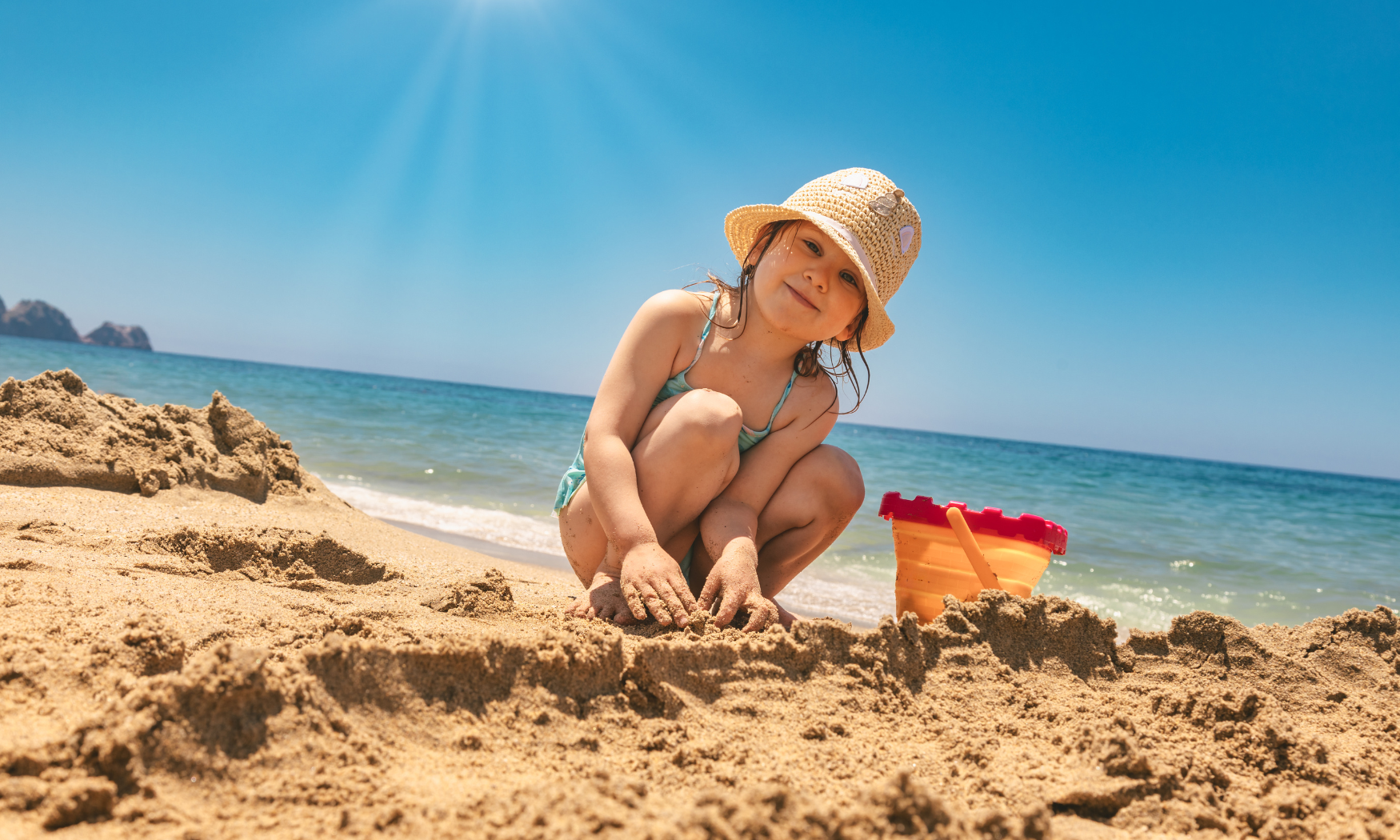
7. Be Aware of Cliff Edges
Cliff edges also pose risks from above and below. It is not uncommon for cliff edges and rocks to crumble, which can lead to slips and falls when standing on the cliff top and being hit by falling debury when below. A recent example is the crumbling cliff at Whipsiderry Beach in Newquay. Stay away from cliff edges, and if you are sitting on the beach, be aware of potential rock falls and cliff crumbles and position yourself appropriately.
Other Things to Watch Out for at the Beach:
Other things to be aware of at the beach include weaver fish, weather changes, surfers, and bodyboarders. Let’s take a quick look at each of these hazards.
Weever Fish
Weever fish are small creatures that measure about 18cm long. They burrow themselves in the sand, and their spiny backs can puncture and sting the soles of your feet if you happen to stand on one. If you think you have been stung by a weaver fish, head to the nearest lifeguard for assistance. If lifeguards are not available, the affected area should be immersed in hot water for 30-90 minutes, and tweezers should be used to remove any remaining spines before the wound is washed and flushed.

Weather Changes
The weather can change instantly; whilst you may be enjoying a gentle breeze, this can quickly turn into high winds, storms, thunder, and lightning. Even the direction of the wind can change suddenly, which poses risks for paddleboarders. Check the weather forecast before you head to the beach, and be prepared for all outcomes.
Note: Do not enter the water if there is lighting. The electrical discharge of lighting spreads horizontally across the water, and you are at risk of being shocked.
Surfers & Bodyboarders
Whilst surfing and bodyboarding can be the ultimate fun day out, watch out for wipeouts and stray boards. Whilst bodyboards tend to be made from foam, which only causes small impacts, surfboards, especially hardboards, can cause serious injuries. If you are swimming, stay out of the surfing zone and remain between the red and yellow flags. If you are using boards and equipment between the black and white flags, make sure you find space in the water and be aware of those surrounding you.
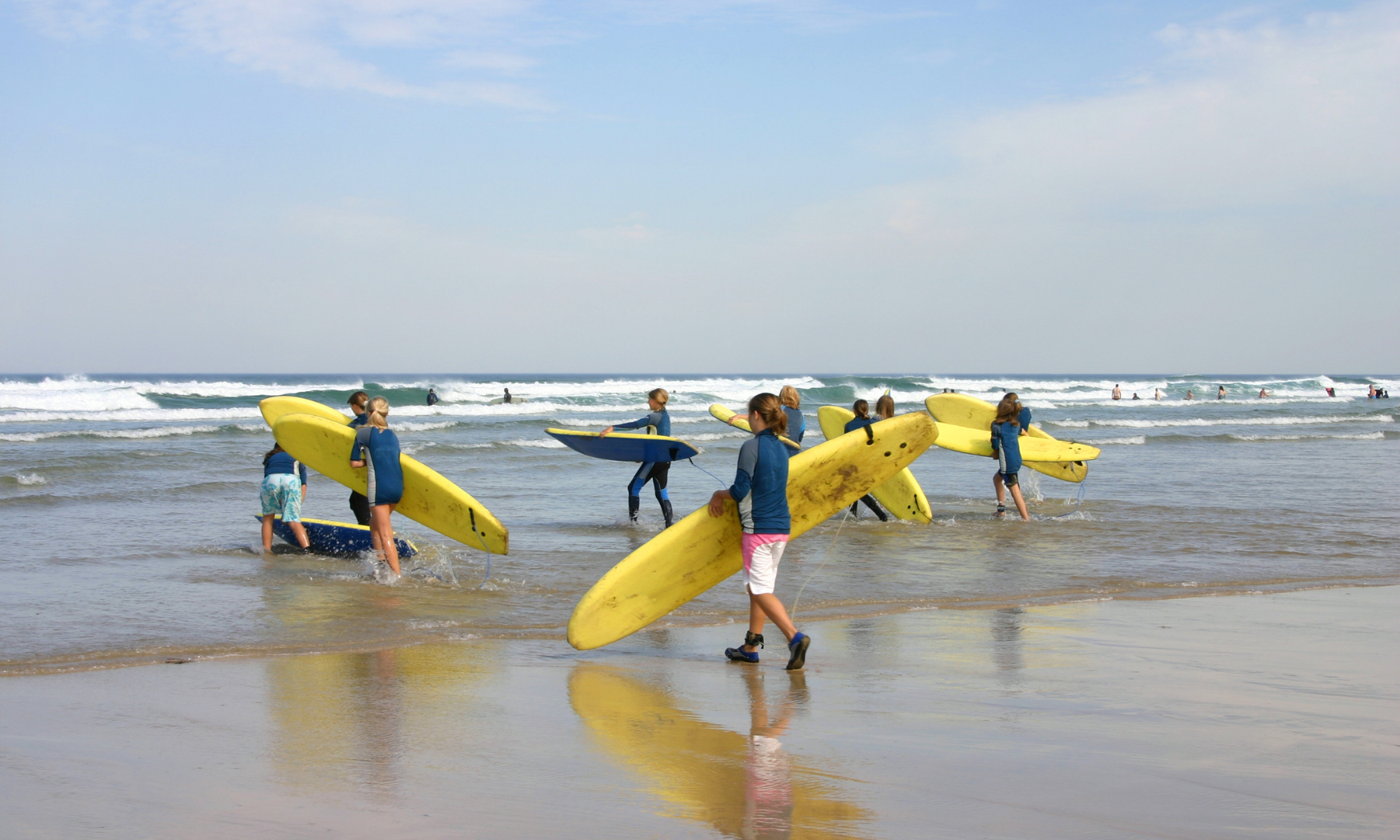
What to Do in an Emergency at the Beach:
At a Lifeguarded Beach
If you are at a lifeguarded beach in an emergency, notify the lifeguard. They have the skills, knowledge, and equipment to make appropriate decisions and make further calls for support.
At an Unguarded Beach
- Call 999 and ask the Coastguard. Keep the person in trouble in sight, or ask someone else to keep sight whilst you find signal/ make the call.
- If the person is in the water and can hear you, tell them to float on their back and stay calm. If they are close enough, you may be able to find and use lifesaving equipment such as lifebelts or throw bags on the beach. However, do not enter the water, as this poses the risk of you getting into trouble yourself.
- If the person is unconscious/not breathing and already on the sand, you may need to start CPR until help arrives.

Cornwall Air Ambulance’s Beach Safety Success Stories:
Harry’s Story – Trevone Beach
Five-year-old Harry was at Trevone beach when he suddenly fell 6 metres off a cliff edge and landed on rocks below. Luckily, he landed on top of his bodyboard but experienced a serious head injury as a result of the fall. Various emergency services were called to the scene, including a first responder, RNLI lifeguards and the Coastguard search and rescue team. Cornwall Air Ambulance arrived just 15 minutes after the call. Harry was then airlifted to Royal Cornwall Hospital before being transferred to Bristol Children’s Hospital. Thankfully, Harry has fully recovered and is now helping raise money for Cornwall Air Ambulance.
Victoria’s Story – Gyllynvase Beach
Victoria was enjoying a day out at Gyllyngvase Beach in Falmouth when suddenly her right hip dislocated. The coastguard team arrived and provided support whilst Cornwall Air Ambulance were on our way. Our critical care paramedics then treated her at the scene and she was transported to the hospital by ambulance. Victoria has since recovered and has now kindly set up a monthly donation to Cornwall Air Ambulance as a thank-you to the team.
Paul’s Story – Hayle Beach
Paul was on a family holiday in Hayle when he became seriously unwell with suspected cardiac-related issues. He had been for a swim and was standing in the sea watching his sons when he began to feel unwell and fell into the water facedown. The lifeguards came to assist, and Cornwall Air Ambulance was tasked to handle this call-out. When the critical care paramedics arrived, they did an initial assessment before flying him by helicopter to the Royal Cornwall Hospital in just 10 minutes! Paul is on the mend and hopes to return to Cornwall for another holiday soon and meet the paramedics who helped him.

How You Can Support Our Life-Saving Beach Missions:
In July 2024 alone, we responded to 99 emergency missions across Cornwall and the Isles of Scilly and need your support to raise further funds for our second AW196 helicopter so we can attend more life-saving missions.
There are many ways to support us; the simplest and quickest way is to make a one-off donation. However, if you are feeling generous, you can be like Victoria and set up monthly donations to support our vital missions. You can also explore other ways to get involved without donating money. We thank you in advance for your generous contributions, time and inspirational fundraising efforts!
FAQs:
What should I be careful of at the beach?
There are many things to watch out for at the beach. The main things to be careful of include the tide, rip currents, the weather, the heat and cliff edges, plus surfers, kayaks and bodyboards.
How do you keep belongings safe at the beach?
You may want to bring a waterproof and lockable bag and use beach towels and clothes to hide your valuables. You can also tag team by going in and out of the water with friends and family while one of you remains on the beach with your belongings.
How can I keep my kids safe at the beach?
Keep your kids safe at the beach by applying and reapplying sunscreen throughout the day, educating them about flags and where to swim, giving them plenty of water and bringing parasols/tents to provide shade. Stick together and keep a close eye on your children, especially young ones, at all times whilst at the beach.